When time is fractured, when its seams no longer hold, the task of art becomes one of rearrangement. To live under conditions of oppression is to feel that time itself is distorted: stretched in the waiting rooms of immigration offices, splintered in the midnight knock of raids, frozen in the bureaucratic language of deportation letters. Idrish, Adam Lewis Jacob's film, begins with this recognition. It does not attempt to seal the past into a neat chronicle. Instead, it assembles fragments, testimony, archival tape, and the tactile embroidery of a Nakshi Katha into a pattern that teaches us how to live when the present collapses into the unfinished work of the past.
The intervention is not only aesthetic but political. By revisiting the anti-deportation campaigns of the 1980s, the film makes visible how individual survival was always interwoven with collective struggle. The chants that once rang through Birmingham's streets are carried back into the present as if to remind us that no struggle ends with its own victory. The figure of Mohammad Idrish—migrant, physicist, trade unionist, agitator—speaks across generations. His story is not an elegy but a dialogue, one that connects the solidarities of Black and Asian communities in Britain to the upheavals and protests that mark South Asia today. Time is not healed in this film. It is deliberately rearranged so that fragments of resistance can be inherited anew.

The Dhaka premiere of Idrish became a gathering where such inheritance felt palpable. Hosted at DrikPath Bhobon, and supported by the British Council's Connections Through Culture 2024 grant, the screening and exhibition made the film's political urgency resonate in a Bangladeshi context. The grant's role was more than logistical. It enabled a cultural exchange where the memories of 1980s Britain—its immigration raids, its racist legislation, its counter-movements of solidarity—could be read alongside the present struggles of Dhaka's own streets. The open-for-all screening was followed by dialogue with Adam Lewis Jacob and with Mohammad Idrish himself, not as relics of history but as interlocutors of the now. A bilingual publication accompanied the event, carrying Rahila Haque's essay and its Bangla translation, extending the conversation across languages and generations.
The narrative of Idrish refuses the comfort of chronology. It does not begin, proceed, and end as if the past were a resolved sequence. Instead, it weaves together fragments: Idrish's recollections of his childhood in Faridpur, VHS recordings of trade union marches, animated flowers and tigers drawn from his mother's Nakshi Katha, and vérité sequences of a river journey filmed in Bangladesh decades later. Each fragment interrupts the other, forming a structure that feels closer to memory than to documentary.
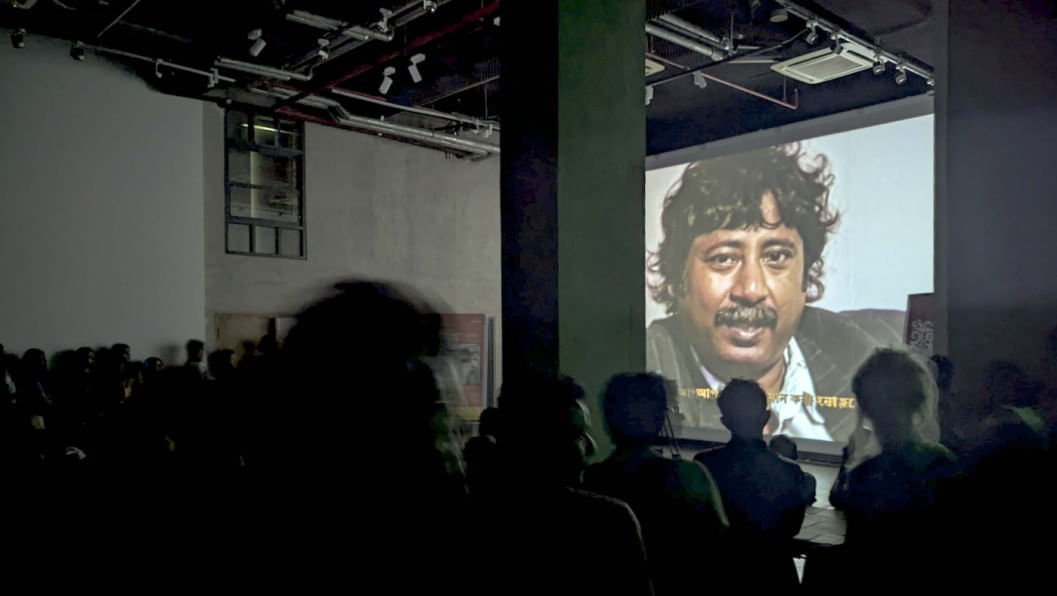
This fragmented composition is not a stylistic flourish. It is a political decision. For the history of deportation struggles cannot be told as a closed archive, for every victory is provisional and every defeat reverberates into the present. By collaging testimony with archival detritus, the film repositions Idrish's story as more than an individual ordeal. His five-year fight against deportation is staged as an intergenerational encounter, where younger activists and students might glimpse the tactics, slogans, and solidarities that remain urgently relevant.
In this sense, the narrative is not about the past alone. It is about the circulation of struggle: the way chants echo, the way images reappear, the way resistance refuses to die. Through this nonlinear rhythm, Idrish invites us to see anti-racist campaigns not as episodes that history has already decided, but as fragments awaiting reactivation—fragments that belong to us as much as they once belonged to him.
To understand Idrish is to approach it as more than a documentary. It is a meditation on how cinema can bear witness, reactivate memory, and ignite resistance. The film stands at a crossroads where the insights of critical thinkers illuminate its form and force.
The force of Idrish lies not only in its words or images, but in its sound. Resistance is always audible before it is visible. The chants of campaigners, the rhythm of slogans repeated in unison, the thrum of streets alive with defiance—these are not background elements but the pulse of the film itself.
André Bazin teaches us that cinema's highest vocation lies in its capacity for witnessing. The vérité passages of Idrish—unhurried shots of Mohammad Idrish speaking, the unpolished grain of black-and-white travel images—hold faith in the real, a refusal to manipulate testimony into spectacle. It is Bazin's ethic of realism: let presence speak for itself, let the dignity of a life show through without adornment.
Yet the film does not stop with witnessing. It turns the archive itself into a site of resistance. Michel Foucault reminds us that archives are not neutral: they determine what can be remembered and what must be forgotten. Jacques Derrida warns us that every archive is also an apparatus of power, storing as it erases. Against this, Idrish reassembles VHS tapes, campaign posters, and union chants into a counter-archive. The fragments are not left to stagnate but are reanimated, demanding that memory become insurgent rather than dormant.
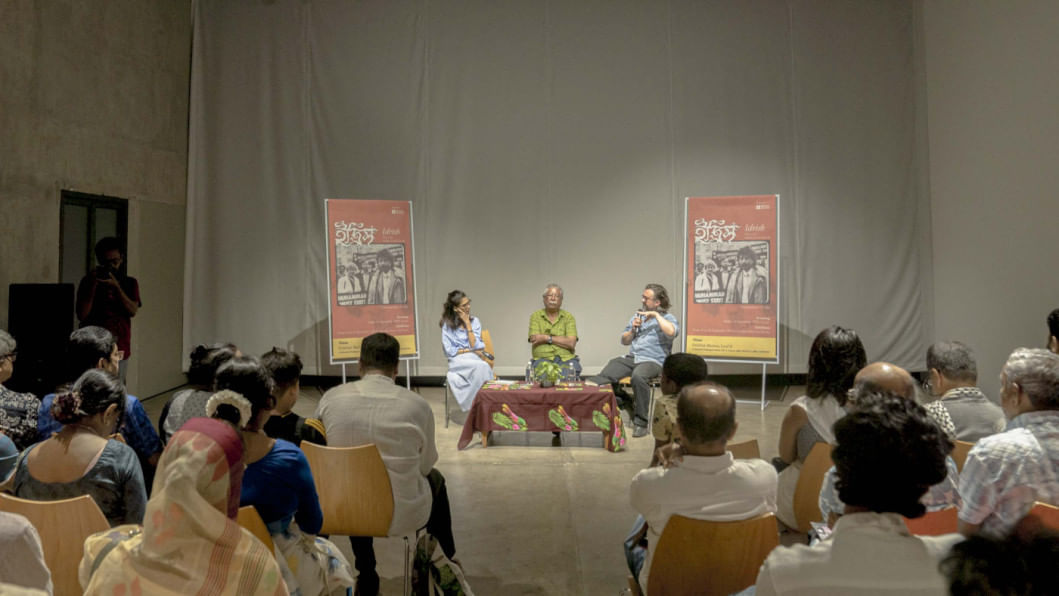
This insurgency leads us to Walter Benjamin, who wrote that the past must be seized in a moment of danger. The anti-deportation struggle of the 1980s is seized here, not as a relic but as a detonator that explodes in our own troubled present. And it resonates with Frantz Fanon's insistence that resistance is more than legal defence: it is psychic liberation, a reclaiming of dignity from the violence of colonial law. When Mohammad Idrish declares, "The law is wrong, the law is racist," the statement rings as both testimony and manifesto.
Through these crossings, Idrish emerges as a cinematic praxis, a film that does not simply narrate but intervenes—fusing realism, archive, and revolutionary urgency into a shared call to action. I think Adam approaches Idrish through a mode of psychedelic realism, where fragments of the past and the urgencies of the present are made to intersect. The film feels as though it emerges from an unconscious of reality itself, a space where memory, dream, and struggle collide to reveal truths that ordinary chronology conceals. In this hallucinatory layering, resistance becomes both lived history and ongoing vision.
The story of Idrish is not confined to the decades in which it unfolded. To watch the film in 2025 is to feel its reverberations in our own unsettled present. The anti-deportation campaign in Britain in the 1980s speaks directly to the renewed violence of far-right groups in the UK, who once again storm hotels housing asylum seekers, torch buildings, and hunt for bodies marked as foreign. The same slogans of exclusion return with new accents, reminding us that racism is never buried. It mutates and resurfaces whenever the state grants it permission.
The force of Idrish lies not only in its words or images, but in its sound. Resistance is always audible before it is visible. The chants of campaigners, the rhythm of slogans repeated in unison, the thrum of streets alive with defiance—these are not background elements but the pulse of the film itself. The editing moves as if guided by music, cutting to the cadence of collective voices, weaving testimonies with the beat of protest. It feels as though the film were composed by someone who is also a musician, attentive to pitch, timing, and refrain. The sound design, created by Claude Nouk, reinforces this musicality, making the ear hear resistance as vividly as the eye sees it.
This musicality does more than amplify slogans. It transforms them into a living archive. When the crowd repeats "Mohammad Idrish must stay," the sound becomes a time-travelling refrain, echoing across decades, finding new listeners who might yet take it up. The editing intensifies these refrains, magnifying voices until they feel like instruments in a collective score. In this sense, the film is both document and composition, a symphony of protest in which every shout and every silence carries weight.
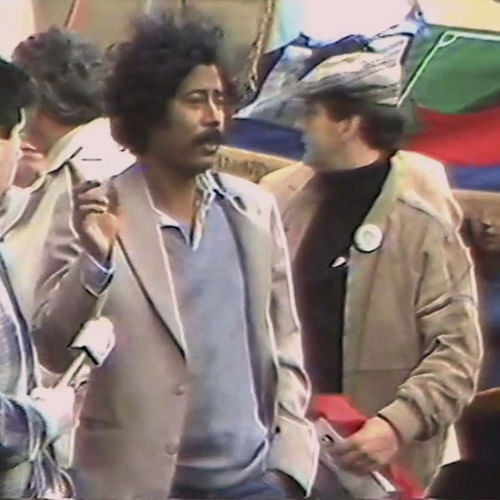
Layered into this soundscape are cultural motifs that ground Idrish's life in Bangladesh. The Nakshi Katha stitched by his mother appears as a visual thread, animated into life with birds, flowers, and tigers. These motifs do not serve as ornaments. They embody a socio-cultural reality where resistance is also nurtured in the intimate textures of fabric, in the patience of stitches that preserve memory across generations. In the juxtaposition of chants and embroidery, the film captures how political struggle and cultural inheritance are inseparable. Both are acts of stitching fragments of time into a form that endures.
The story of Idrish is not confined to the decades in which it unfolded. To watch the film in 2025 is to feel its reverberations in our own unsettled present. The anti-deportation campaign in Britain in the 1980s speaks directly to the renewed violence of far-right groups in the UK, who once again storm hotels housing asylum seekers, torch buildings, and hunt for bodies marked as foreign. The same slogans of exclusion return with new accents, reminding us that racism is never buried. It mutates and resurfaces whenever the state grants it permission.
In Bangladesh, another resonance emerges. The student movement of 2024, which began as a protest against quota injustice, swelled into a nationwide uprising against authoritarianism. Nearly fifteen hundred people gave their lives in that struggle. Their deaths, like Idrish's near-deportation, remind us that political existence itself is precarious, that survival depends on solidarity. The chants in Dhaka's streets carried the same urgency as those in Birmingham decades ago, insisting that a future still belongs to those who resist.
The film teaches that resistance is not only necessary but joyous. It is heard in the chants of demonstrators, seen in the threads of a Nakshi Katha, remembered in the voices that refuse silence.
And beyond both Britain and Bangladesh lies Gaza, where the genocidal machinery of the present erases lives and cities in real time. Watching Idrish against this backdrop is to sense how fragments of past resistance can become tools for survival in the face of overwhelming destruction. The archive of struggle—the chants, the slogans, the insistence that "the law is wrong, the law is racist"—becomes a shared inheritance across geographies of oppression. In this way, Idrish's story is not an isolated biography but a connective tissue between struggles, a reminder that the fight against injustice is always global and always unfinished.
What lingers after the film are not only images but words. Mohammad Idrish speaks with the clarity of someone who has lived inside the machinery of injustice and refused to be broken by it. His statements cut through the abstractions of policy and law, reminding us that resistance begins with naming what is wrong. "The law is wrong, the law is racist. Stand up. Don't take it without a fight." The bluntness of the line is its power. It refuses the temptation of nuance where none is required. It speaks not only to his own case but to the condition of countless others.
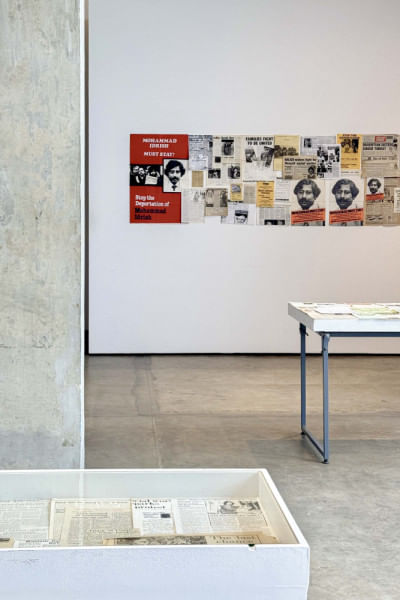
Elsewhere, he divides England into two: one belonging to racists, capitalists, and the extreme right, and the other to trade unionists, socialists, and those who fight for justice. "That is the England I love." This vision is not sentimental. It is aspirational, the sketch of a nation not yet realised but lived in fragments of solidarity. By voicing it, Idrish insists that belonging is not bestowed by law but forged in struggle.
His reflections are not heroic monologues but provocations to the present. They demand that we ask ourselves where we stand, whether we will remain silent or take up the chant. In these dialogues, the film finds its conclusion, not by closing the story but by opening it further. Each sentence of Idrish is a summons, each phrase a baton passed forward. To listen is already to be implicated, to be drawn into the unfinished work of resistance.
The film teaches that resistance is not only necessary but joyous. It is heard in the chants of demonstrators, seen in the threads of a Nakshi Katha, remembered in the voices that refuse silence. It places the viewer inside the pulse of solidarity, showing that even the most precarious life can become the centre of a movement. Idrish's voice remains the guiding thread: "You haven't done anything wrong. The law is wrong. Stand up. Don't take it without a fight."
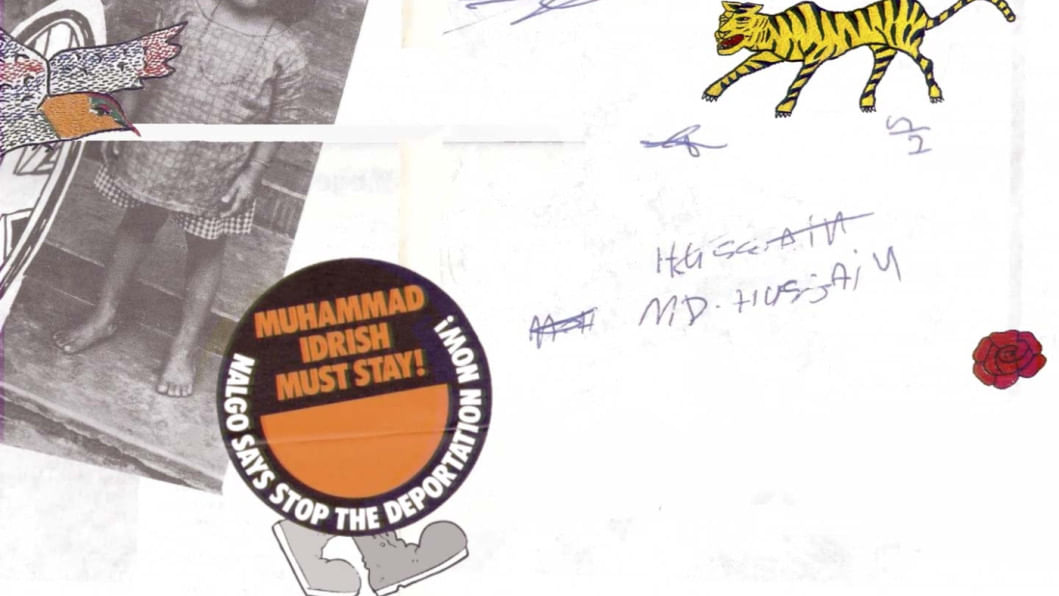
To encounter these words is to confront one's own responsibility. The film leaves us not with closure but with an opening, an invitation to inherit fragments of defiance, to reassemble them in our own time, to believe that another England, another Bangladesh, another world is possible. Idrish is a reminder that history is not something we watch passively. It is something we are called to rearrange, again and again, until justice finds its form.
Naseef Faruque Amin is a writer, screenwriter, and creative professional.


Comments